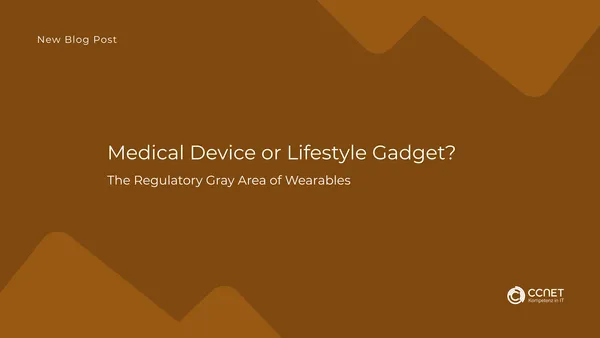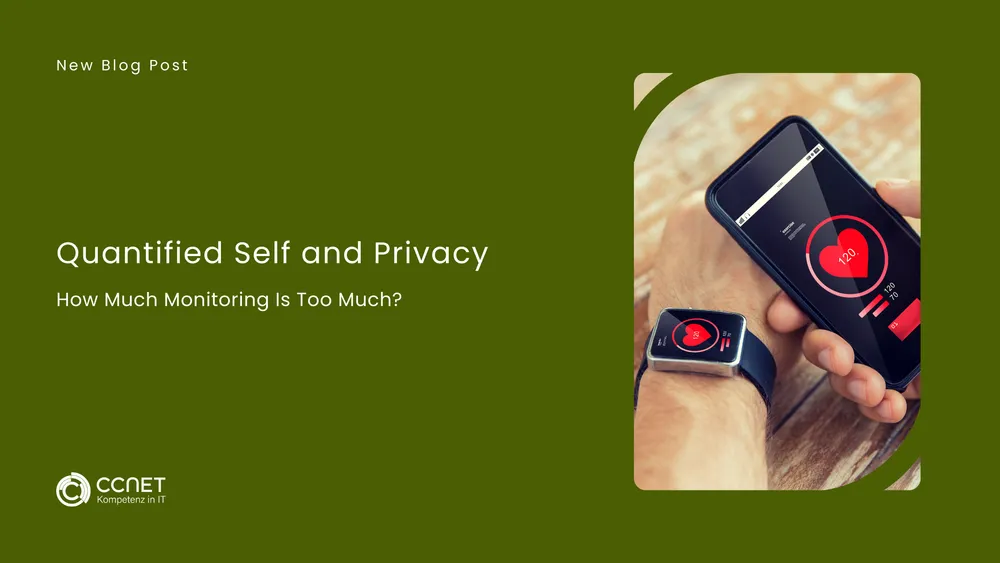
CCNet
Jun 23, 2025 • 3 min read

Medical Device or Lifestyle Gadget?: The Regulatory Gray Area of Wearables
The General Data Protection Regulation (GDPR) sets high standards for the processing of personal data—especially in the healthcare sector. Medical wearables collect and store sensitive information about their users' health, which is why they are subject to particularly strict data protection guidelines. But how compliant are wearables actually with the GDPR, and what measures must manufacturers and users take to meet the legal requirements?
1. Why does the GDPR affect medical wearables?
Medical wearables collect a variety of sensitive data, including:
- Vital signs such as heart rate and blood pressure
- Sleep and movement profiles
- Disease progression and health status
- Location and activity data
According to the GDPR, health data is considered particularly sensitive, meaning that it may only be processed under strict conditions. Companies that develop or use wearables must therefore take special measures to ensure that data processing is GDPR-compliant.
2. What are the data protection issues with wearables?
a) Lack of user consent
Many wearables collect data automatically, often without the explicit and informed consent of users. According to the GDPR, consent must be voluntary, specific, informed, and unambiguous.
b) Non-transparent data processing
It is often unclear exactly what data is collected, stored, and shared with third parties. Unclear privacy policies and difficult-to-understand terms of use make it difficult for users to make informed decisions.
c) Storage and transmission of data
Some wearables store health data in unencrypted form or transmit it to servers outside the EU, which may violate GDPR requirements.
d) Inadequate deletion policies
The GDPR requires that personal data be deleted as soon as it is no longer needed. However, many providers do not have clear policies for data deletion or do not give users the option to completely remove their data.
3. Measures for GDPR compliance
In order to meet the requirements of the GDPR, manufacturers and users must take a number of essential measures:
- Obtain explicit and informed consent: Users must be informed in a clear and understandable manner about what data is collected and processed.
- Practice data minimization: Only data necessary for the intended purpose should be collected and stored.
- Secure storage and encryption: Health data must be encrypted during storage and transmission.
- Enable data access and deletion: Users should have access to their stored data at any time and be given the option to delete it.
- Provide transparent privacy policies: Companies should formulate their privacy policies in understandable language and disclose how the data is handled.
Conclusion: Strict requirements require careful implementation
The GDPR sets high standards for the data protection of medical wearables. Manufacturers are obliged to strictly comply with the legal requirements in order to avoid violations and heavy fines. Users should be aware of what data they are disclosing and what rights they have with regard to their personal information.
In the next article, we will deal with a related topic: “Medical device or lifestyle gadget? The regulatory gray area of wearables.”
FAQ about Wearables
Why does GDPR apply to medical wearables?
Because they collect sensitive health data such as vital signs, movement profiles, or medical histories. Under GDPR, such data is considered highly sensitive and may only be processed under strict conditions.
What issues exist with user consent?
Many wearables collect data automatically without explicit, informed consent. Under GDPR, consent must be voluntary, specific, informed, and unambiguous.
How does lack of transparency in data processing appear?
It is often unclear which data is collected and shared with third parties. Complicated or vague privacy policies make it difficult for users to make informed choices.
Why are storage and transfer critical?
Health data are sometimes stored unencrypted or transferred to servers outside the EU, which can violate GDPR requirements.
What does GDPR demand regarding data deletion?
Data must be erased once it is no longer needed. However, many providers lack proper deletion processes or do not offer users full deletion options.
What measures are required for GDPR compliance?
Obtain explicit consent, apply data minimization, ensure encryption, provide access and deletion rights, and maintain transparent privacy policies.


